From voice assistants like Siri to virtual support agents, chatbots are becoming a key technology of the 21st century.
But what is a chatbot anyway?
Essentially, chatbots are computer programs designed to engage in conversations with users, simulating human-like interactions. These smart companions have become increasingly prevalent in various industries and are reshaping the way we interact with technology.
There are bots capable of anything from answering basic queries to becoming elaborate virtual helpers that learn with time.
Join us as we delve into everything you need to know about these fascinating conversational agents.
Deliver frictionless customer experience with chatbots
First things first—
How do chatbots work?
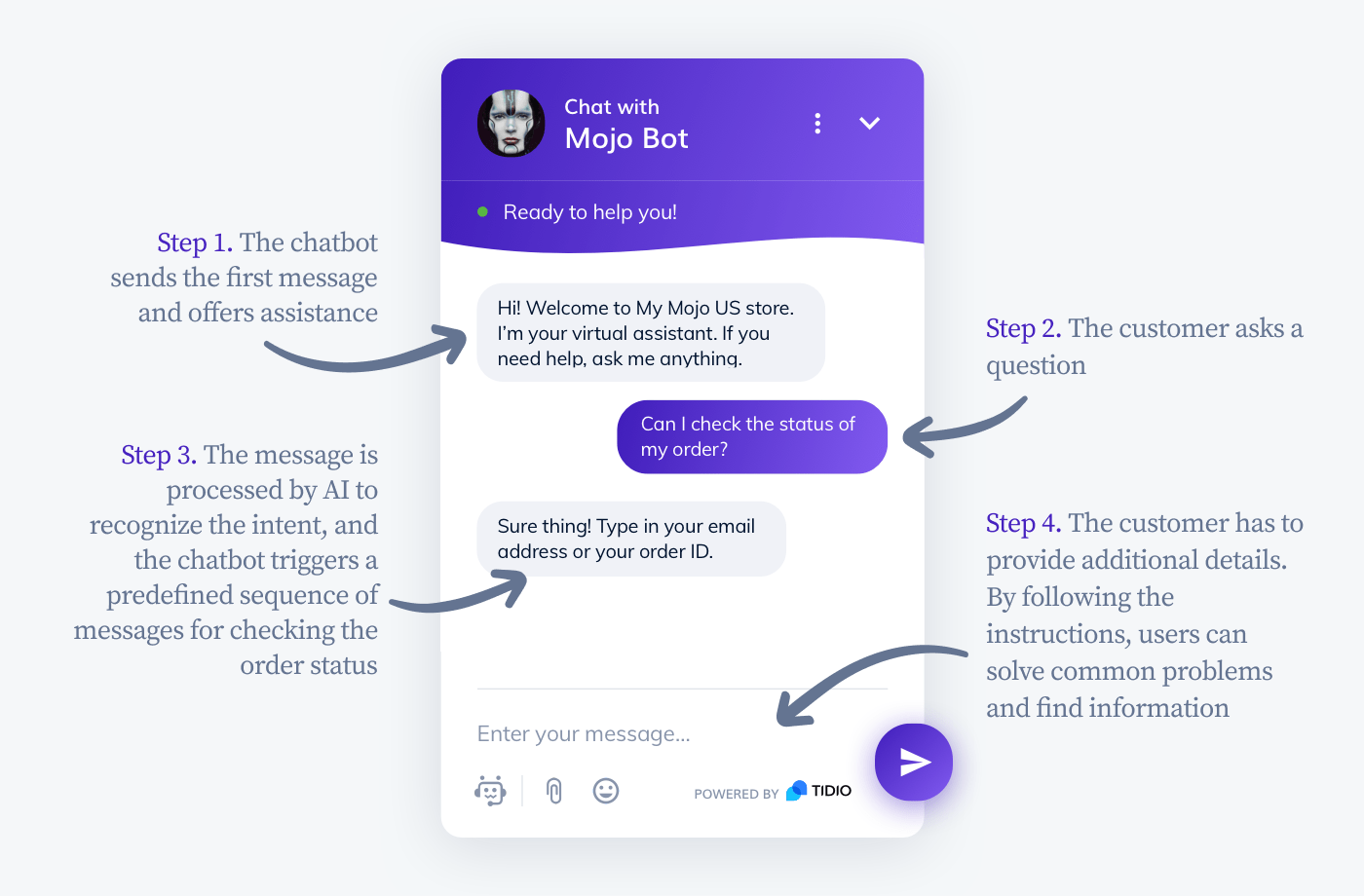
Chatbots operate based on three fundamental components: Natural Language Processing (NLP), Machine Learning (ML) algorithms, and a rule-based system.
Now, let’s explain each one.
- Rule-based systems
In a rule-based, or chatbot decision tree type of system, developers predefine specific responses to guide the chatbot’s interactions. These bots follow a set of if-then rules, which are programmed by developers to determine how they respond to user inputs. However, their responses are fixed and may not address complex users’ questions effectively. They are also less adaptive to changes in user behavior or language patterns.

- Natural Language Processing (NLP)
This vital technology allows chatbots to comprehend and analyze human language in written or spoken form. NLP bot algorithms break down user messages into meaningful patterns, recognizing intent and extracting relevant information.
By understanding the context and intent of user queries, chatbots can provide more accurate and human-like responses. ChatGPT would be one of the most famous examples of bots that utilize this kind of technology. Another great example is Tidio’s Lyro—a type of conversational AI specifically created to help small and medium businesses maximize their support efforts.
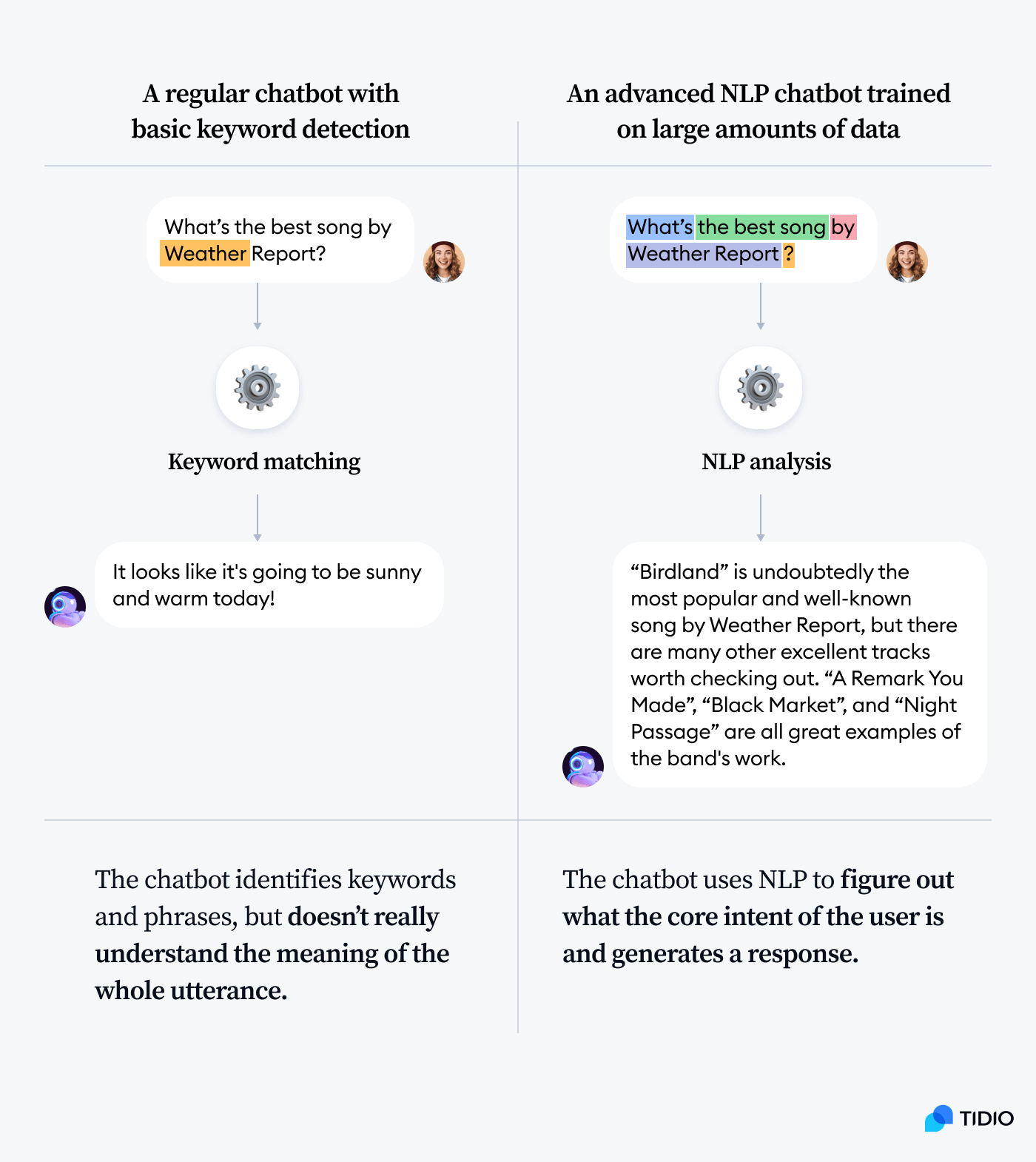
- Machine Learning (ML)—this technology empowers bots to learn from different datasets and user interactions, improving their responses over time. ML-driven chatbots become smarter and more adaptable with continuous use, refining their abilities to engage effectively with users.
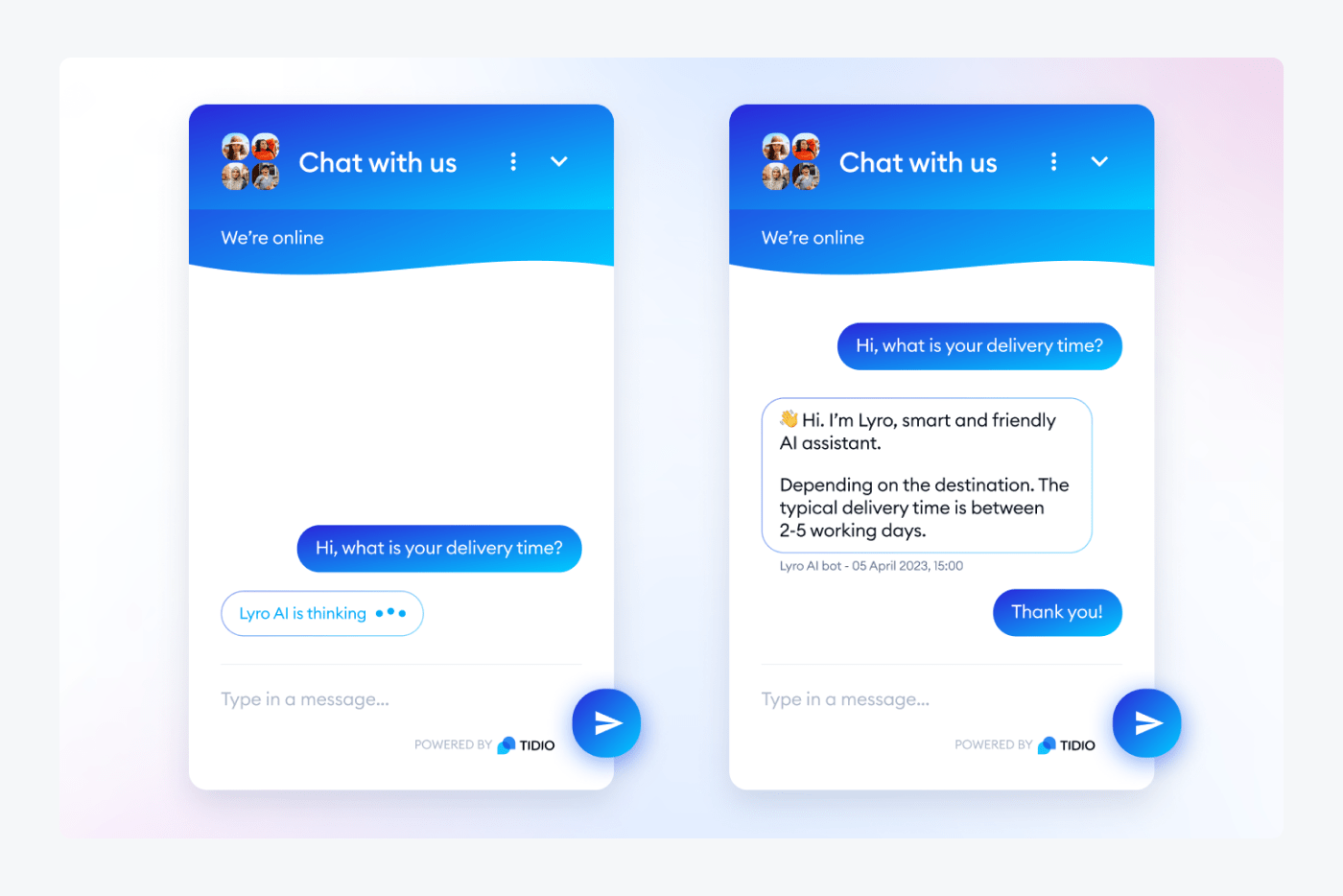
By combining all these components, chatbots bridge the gap between humans and machines, offering seamless and efficient communication.
Now, here comes another pressing question—
Are all chatbots using AI?
The simple answer is—no. Artificial intelligence is a broad term. Even the simplest chatbots are manifesting human-like characteristics by the very fact of engaging in a conversation with you. On the other hand, if by AI we understand machine learning and decision-making processes, only some chatbots are “real” AI chatbots.
Read more: Learn all about different types of chatbots and how they can benefit your business. Also, make sure to check out the difference between chatbots vs. conversational AI.
Enhance your support efforts with a conversational AI bot
Okay—
Now you know more about the technologies used behind these smart virtual helpers.
But what is the purpose of chatbots? Why do companies use bot assistants instead of offering more personal (human conversation-based) customer service?
Let’s take a more detailed look.
What are the benefits of chatbots?
From providing instant answers to automating repetitive tasks, bots can do wonders when it comes to streamlining the user experience. On top of that, this technology is becoming extremely popular—over 1.4 billion customers have already used a chatbot!
Check out the key benefits of using bots:

- Faster replies—even the fastest live agents need some time to type in an appropriate response. Bots send automated responses in milliseconds, which makes for quicker service and bigger customer satisfaction.
- 24/7 support—virtual assistants don’t need to sleep, and they never get bored. Chatbots work for free and without any limits.
- Better user experiences—about 40% of customers prefer digital AI assistants to other forms of customer service. While some still prefer to wait for a real person, it is important to provide a solution that delivers the best customer experience.
- More customer interactions—chatbot apps increase customer engagement levels. Their reply rates are significantly higher (over 10%) than engaging customers via email or contact forms.
- Great return on investment for businesses—the costs of deploying a chatbot on your website or social media are minimal. Chatbot pricing plans have a great ROI—a single bot can do the work of a whole call center. Not to mention that using a chatbot can reduce your monthly ticket-resolving costs by up to five times!
Read more: See how Bella Sante, a med SPA, increased their revenue with the help of conversational chatbots.
While all this sounds impressive, it’s better to go one step further and check out the way bots work in action.
So—
What is a chatbot used for?
Bots have become widely used in various industries and applications due to their ability to automate tasks, provide instant responses, and improve and personalize customer experiences. But this isn’t the end-all-be-all of their capabilities.
Here are some of the most frequent uses of chatbots:
Customer support
Chatbots are frequently used to assist in customer service to handle common inquiries, answer FAQs, and provide 24/7 support. They can resolve issues quickly and end up routing complex problems to human agents when necessary.
Let’s say you’re having trouble accessing your online banking account late at night. Instead of waiting until the next morning to call customer support, you see a chat window with a chatbot that offers 24/7 assistance. You type in your issue, explaining that you can’t log in. The customer service bot quickly identifies the problem—a temporary password issue. It then guides you through the steps to reset your password securely, and within minutes, you regain access to your account.
Thanks to the efficient and round-the-clock support of the chatbot, your problem is solved quickly, saving you time and avoiding any further inconvenience.
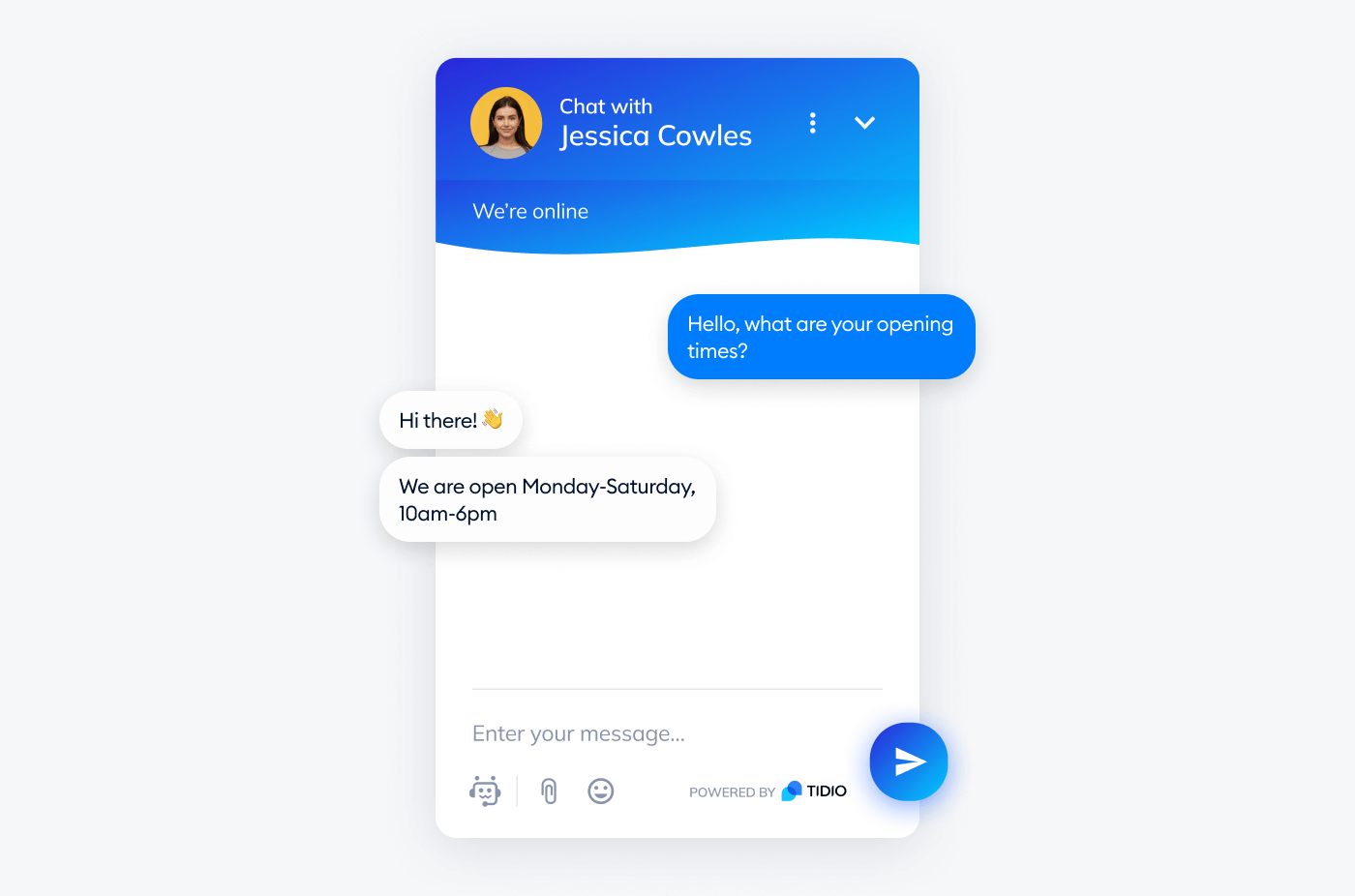
Read more: Head to our knowledge base and learn how to use Tidio’s reply assistant to help your agents deliver faster replies. Also, learn all about an FAQ chatbot and how to create one for your own business needs.
Ecommerce
Additionally, bots are also used on ecommerce websites to assist consumers with product recommendations, order tracking, and the overall shopping experience. They can also facilitate transactions and process payments.
Imagine you are shopping online for a new pair of shoes late at night, and you have a question about the sizing. Instead of waiting until the next day for customer support, you encounter a friendly chatbot. You type in your question, and instantly, the bot responds with helpful information about the shoe sizes and even suggests a size based on your previous purchases.
Quite convenient, isn’t it?
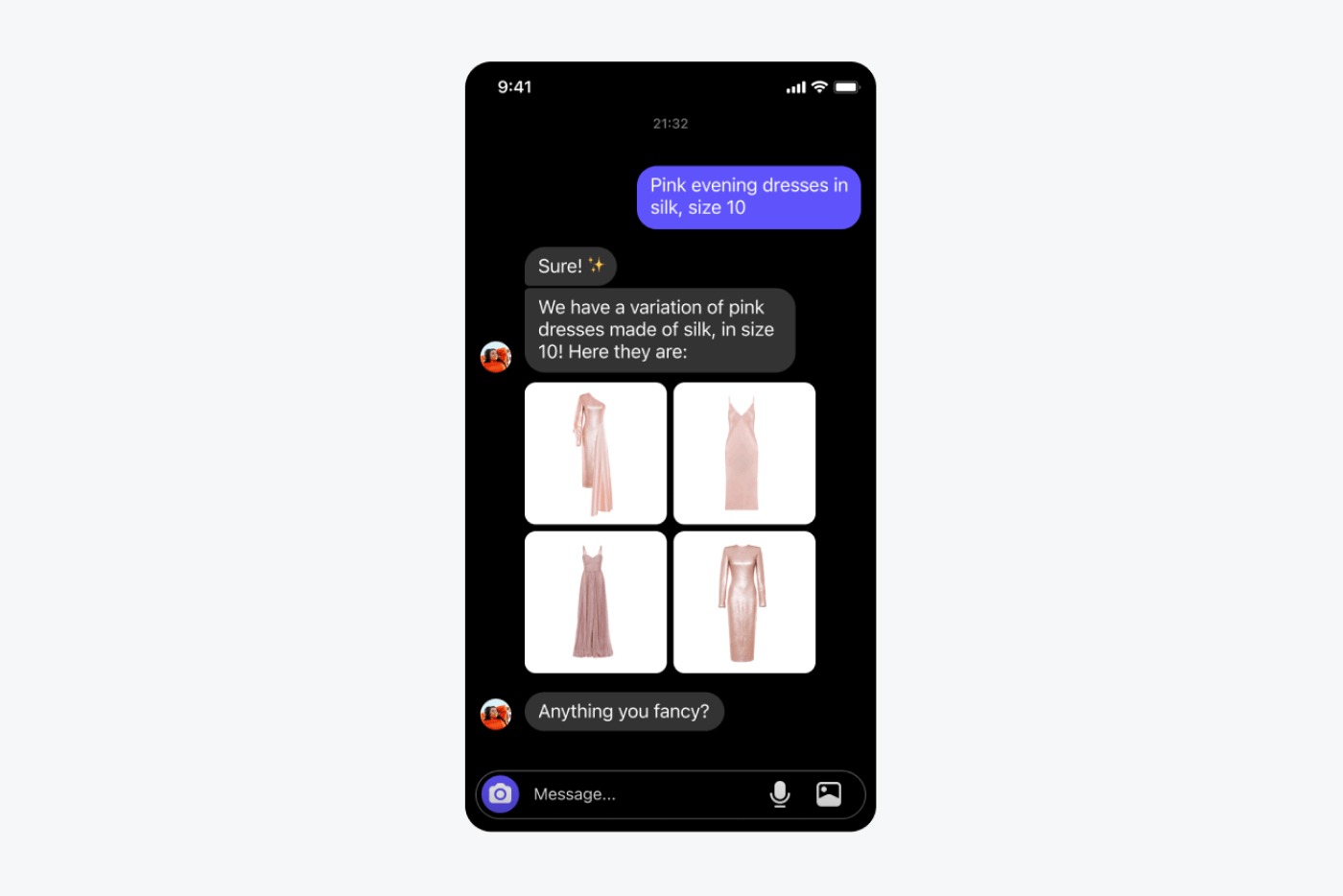
Read more: Check out a chatbot vs live chat comparison and learn which one is best for your business.
Virtual assistance
Personal virtual assistants like Apple’s Siri and Amazon’s Alexa leverage chatbot technology to help users with various tasks. This includes setting important reminders, finding any kind of information, playing music, and even controlling smart home devices.
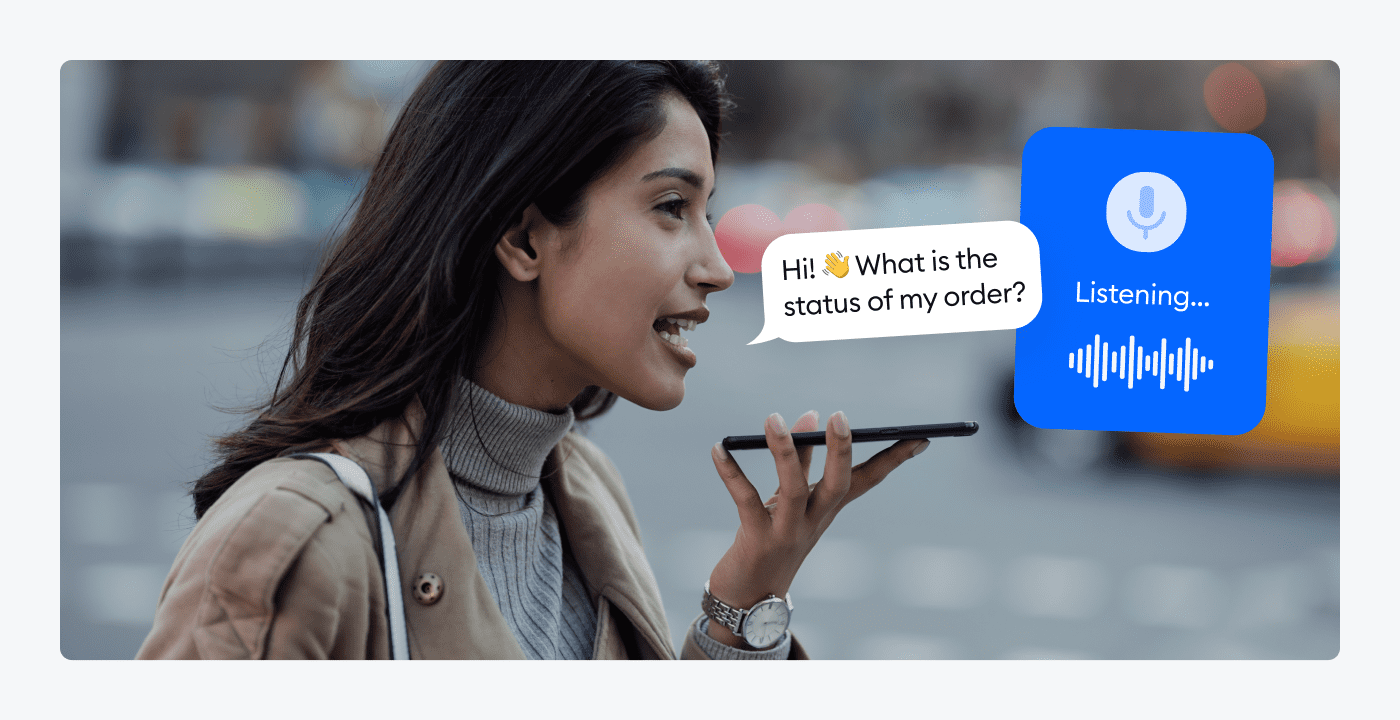
Lead generation
Oftentimes, chatbots are employed by businesses to engage website visitors and gather information about potential leads. They collect phone numbers, emails, and other contact details (usually by offering incentives such as discounts or free resources).
Aside from helping you qualify leads, they can also schedule appointments and direct prospects to the appropriate sales representatives.
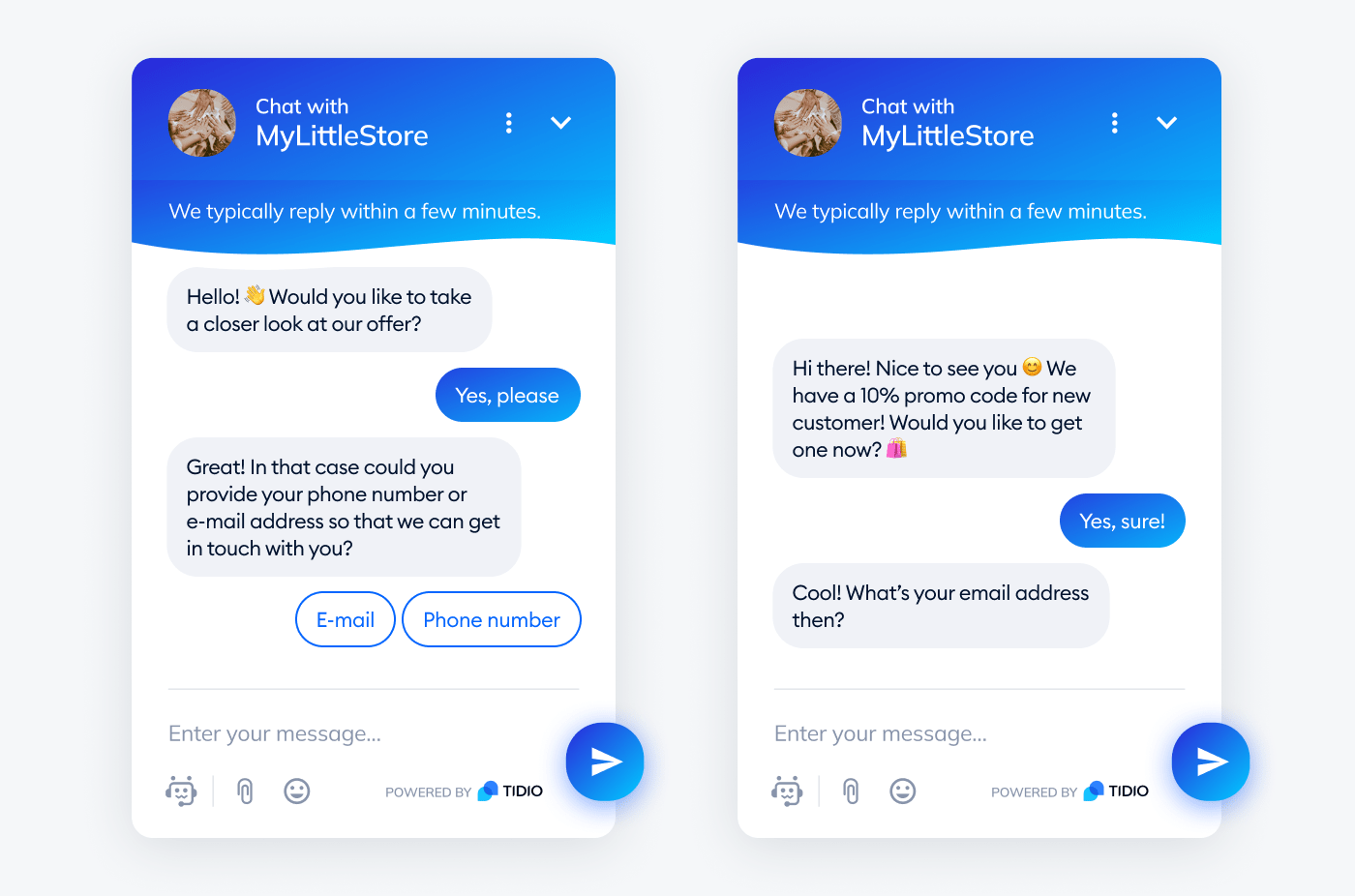
Read more: Get the free sales automation ebook and learn how to increase sales and lead generation with AI and chatbots.
Booking and reservations
In the travel and hospitality industry, bots are used to facilitate anything from booking flights, and hotels to restaurant reservations. They streamline the overall process and improve the user experience.
Say that you want to travel to a specific destination. While you’re browsing a travel agency site, a chatbot pops up asking you for your travel dates and preferences. Once you provide this info, the bot quickly presents you with a list of available hotels, complete with prices and customer reviews. After you choose a hotel, the chatbot seamlessly books it for you, saving you time and ensuring a stress-free travel experience.

Banking and finance
Chatbots can also be utilized by financial institutions to help customers with account inquiries, transaction history, money transfers, and basic financial advice. In fact, as many as 61% of banking clients interact with their banks on digital channels already.
Imagine that you want to check your account balance and recent transactions but don’t have time to visit the bank or go through the mobile app. Instead, you can simply chat with your banking and finance chatbot, and it will instantly provide you with the information you need.

Healthcare
In the healthcare sector, chatbots can assist patients with appointment scheduling, medication reminders, symptom assessment, and providing general health-related information.
Say that you’re feeling unwell and want to get some quick advice on your symptoms. Instead of waiting to see a doctor or searching the internet for answers, you can chat with a healthcare bot and tell it your symptoms. Based on your information, the bot suggests self-care measures you can take at home. If your symptoms seem serious, the chatbot will advise you to seek medical attention.
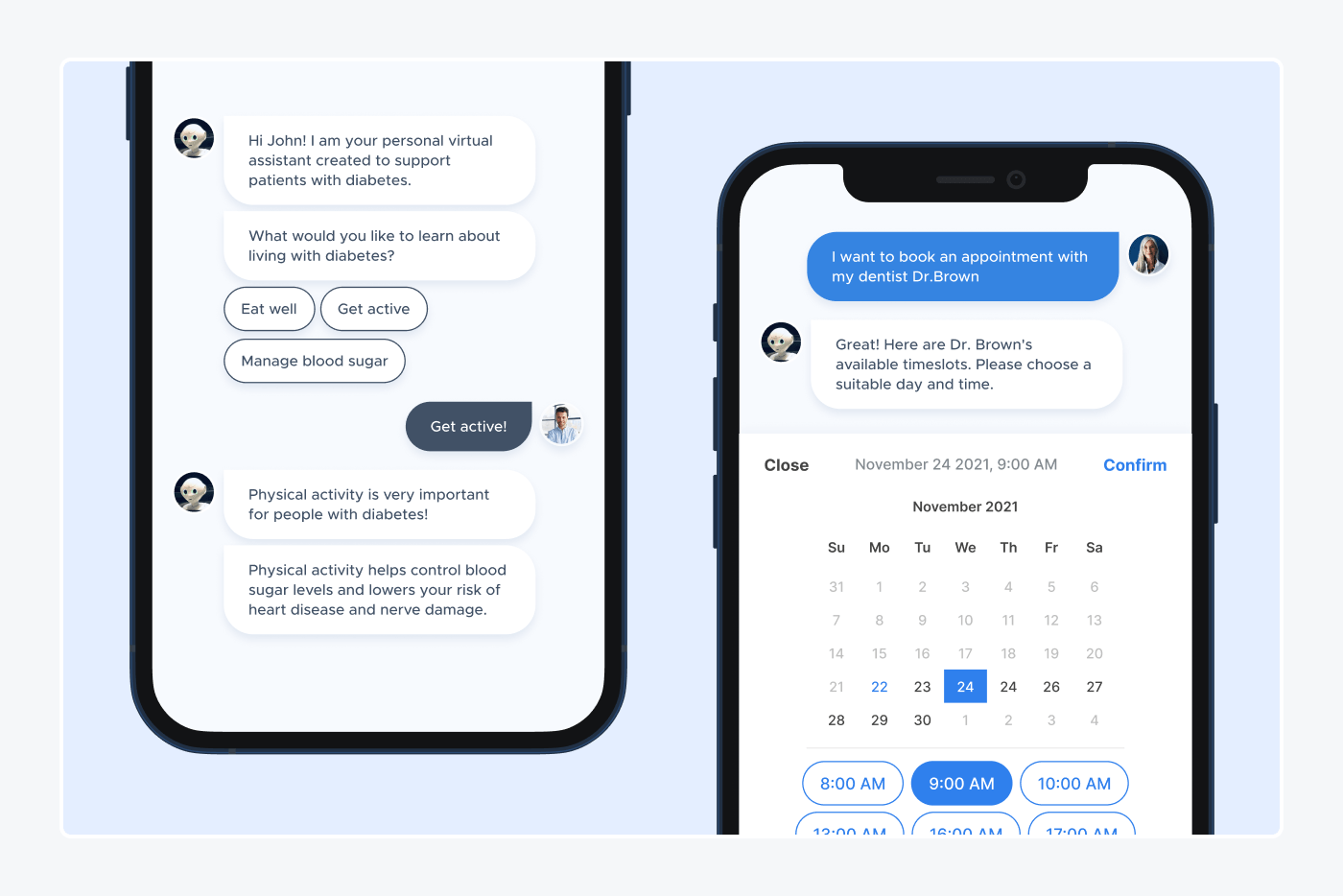
And there you have it—some of the most common use cases of bots across various industries. Keep in mind that this is just a small glimpse into what they can do, and new uses will only continue to emerge over time.
Read more: Be sure to check out some of the best chatbot examples currently available on the web. Also, make sure to check out the difference between chatbots and AI virtual assistants.
Okay—
Now you’ve got a good idea of how you can utilize the power of these digital assistants.
But how do you build your own chatbot in the first place?
How to integrate chatbots on a website?
Good news—most chatbot platforms out there will allow you to make a project like this without using a single line of code. And this is the case with Tidio-powered chatbots as well.
Here’s how to do it:
- Create a free Tidio account
- Follow the registration tour
- Add the chat widget by installing a plugin or pasting a snippet
- Configure your chatbot in the Chatbots panel
Now, let’s also take a quick look under the hood. This is what the bot looks like in the Tidio chatbot builder vs. what the customer sees:

You can design new conversations by simply connecting chat triggers (a node that makes a chat perform a predefined action) and actions (a node that indicates the launching of the bot).
To recognize the meaning of messages automatically, all you have to do is define the language and topic of the conversation.
Read more: For more details, check out our tutorial on how to make a chatbot in a hassle-free manner.
Key takeaway: the future of chatbots
Keeping clients happy is more important than ever. But human customer service agents can be costly compared to automated support and self-service tools. With AI evolution on the constant rise, it’s safe to say that bots will play an even more prominent role, assisting individuals and businesses alike.
So, let’s review what a chatbot can do:
- Generate and qualify leads
- Answer questions 24/7
- Give discounts and special offers
- Recommend products
- Perform booking and reservations
- Provide bank clients with their account info
- Offer assistance in the healthcare sector
And plenty more.
With their 24/7 availability, conversational capabilities, and seamless automation of tasks, chatbots empower users with quick solutions and support. There’s no doubt that their power will continue to rise, revolutionizing the way people interact with businesses and enhancing customer experiences.
Install the best chat automation on the market, in minutes
What are chatbots: Frequently Asked Questions
If you want to learn more about chatbots, here are some of the most common questions about the topic.
A chatbot is an automated computer software that simulates human-like conversations to provide real-time answers to specific customer queries. Most bots utilize natural language understanding (NLU) and machine learning (ML) technologies to interact with clients in a human-like manner. They can do anything from responding to basic user requests to solving more complex issues.
The benefits of bots include 24/7 availability for instant support, saving time and effort for users. They streamline tasks and processes, increasing efficiency and productivity. Chatbots also reduce costs by automating repetitive tasks and providing cost-effective customer service. Additionally, they enhance customer experiences by offering personalized and quick responses.
The easiest way to create a simple bot is to use one of the popular chatbot frameworks. Tidio is one of the most popular options if you are looking for a free chatbot editor. It’s an alternative to Intercom for small businesses.
You can generate a chatbot code snippet and embed it on your website by creating a Tidio account. After adding a live chat widget and setting it up on selected pages, you can add unlimited chatbots and design custom conversation flows.
You can measure the effectiveness of your chatbots by comparing the click-through rates of different messages. Each message and dialogue tree has its own node in the editor. Bot performance analytics are available when you start editing any of your chatbot projects.
The costs of developing a bot from scratch are very prohibitive if you want to hire developers. Using a third-party solution is cheaper and easier, especially if you are a beginner. You can try out the chatbot cost calculator to find the estimated costs of running a bot on your website.
You can get your first bot within minutes if you decide to use a chatbot-building platform. You can start using Tidio-powered bots for free.

